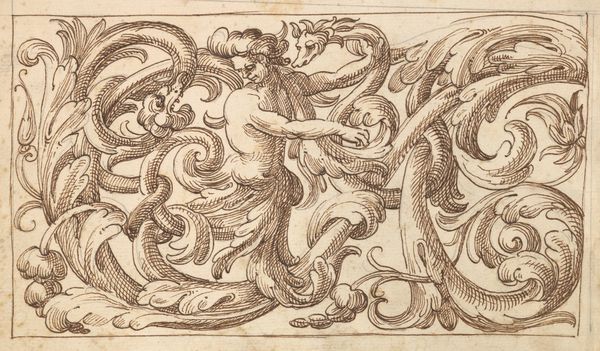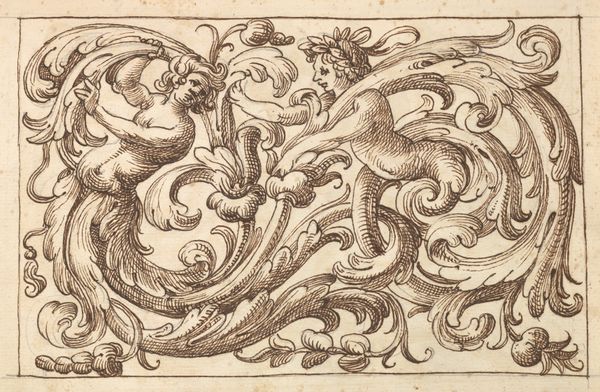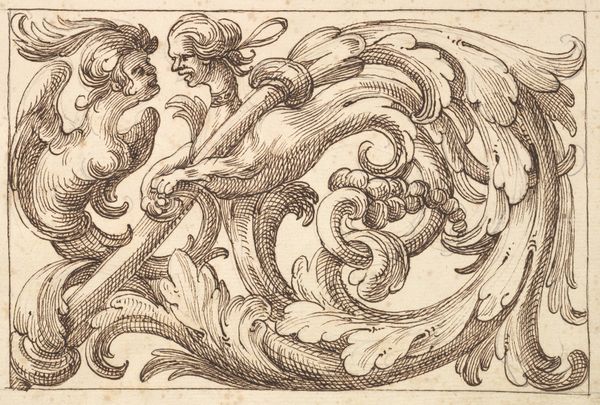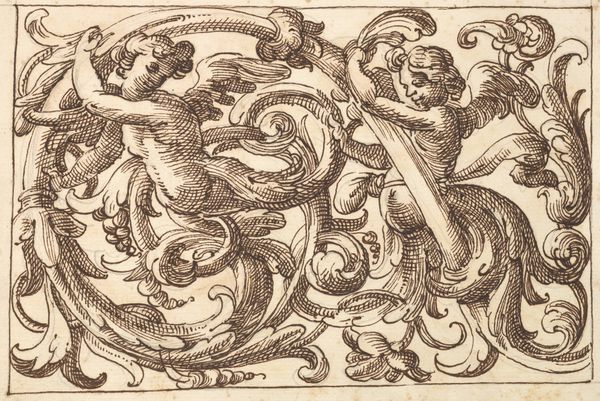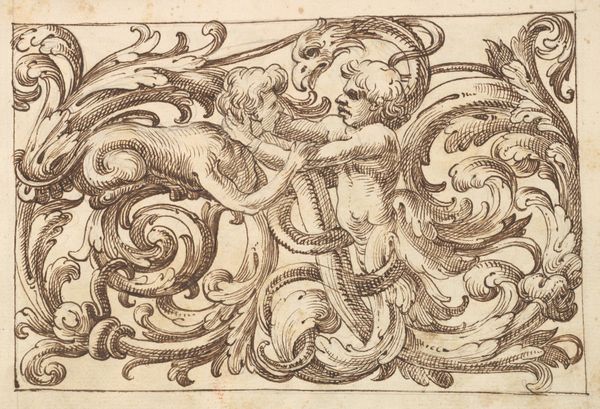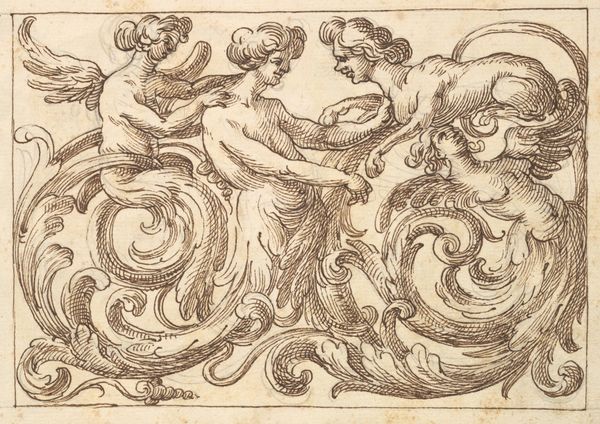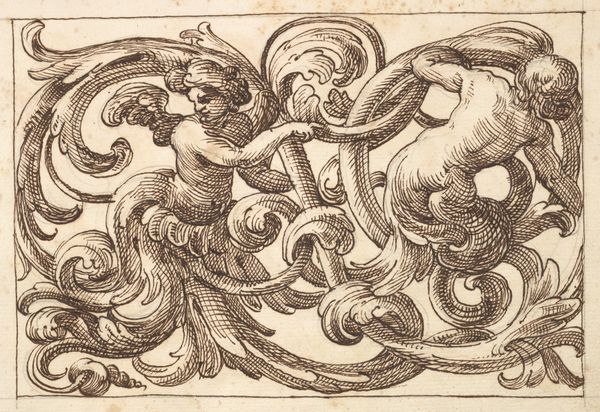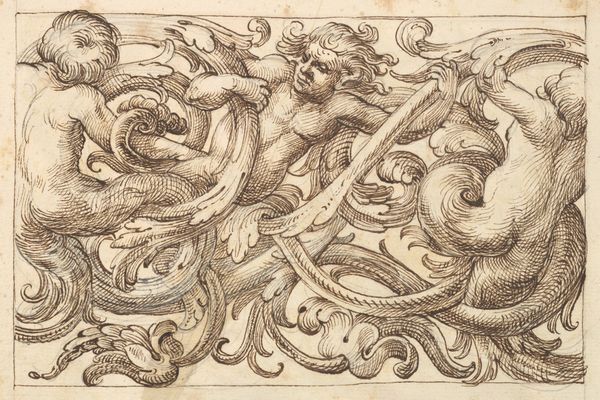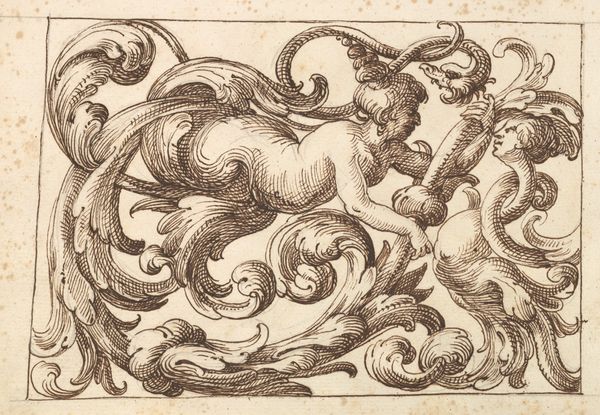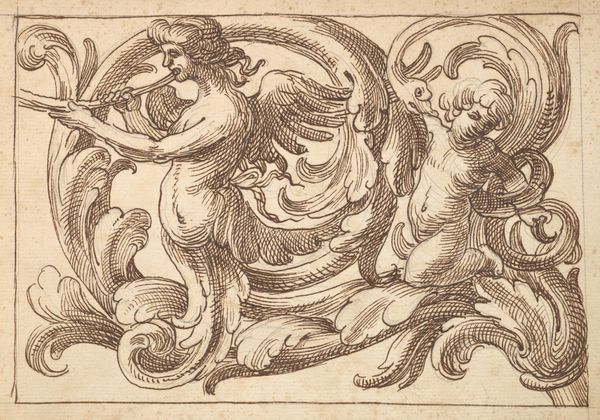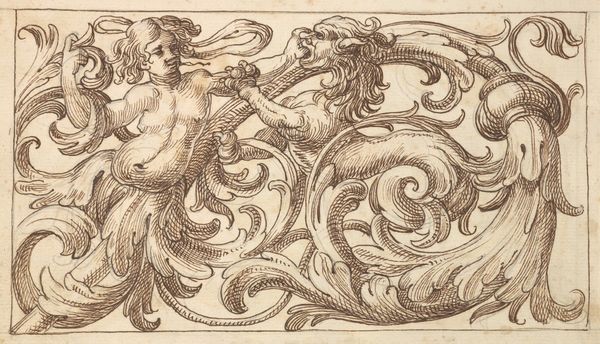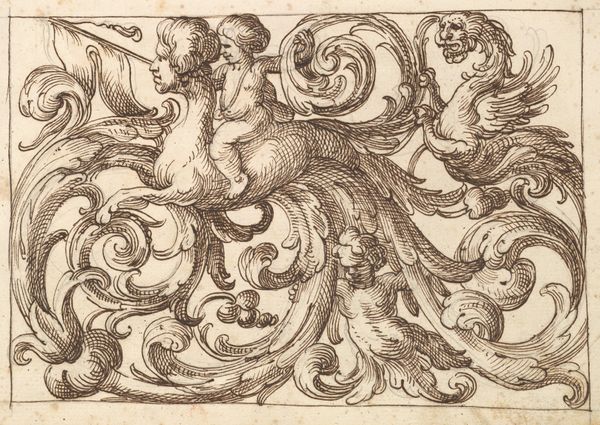
Horizontal Panel Design with a Young Man and a Fantastical Creature Interspersed between Acanthus Rinceaux 1600 - 1650
0:00
0:00
drawing, print, ink
#
drawing
#
allegory
#
pen drawing
# print
#
mannerism
#
figuration
#
form
#
11_renaissance
#
ink
Dimensions: Sheet: 7 1/4 x 10 5/16 in. (18.4 x 26.2 cm)
Copyright: Public Domain
Editor: This pen and ink drawing from somewhere between 1600 and 1650 is called "Horizontal Panel Design with a Young Man and a Fantastical Creature Interspersed between Acanthus Rinceaux." It looks like it could have been made for a decorative print, like wallpaper almost. How should we interpret this design, focusing on its creation and function? Curator: Well, let's consider the materials. Ink on paper, mass-produced as a print, suggests wider accessibility compared to, say, a unique painting for a wealthy patron. The repetition of the acanthus leaves and the fantastical creature indicates a design intended for reproduction, pointing towards a commercial function, possibly even influencing interior decoration and everyday material culture. Does this mass-produced element impact how you see the design? Editor: That's an interesting perspective! It changes how I perceive it. Initially, I saw it as a piece of art, but now I’m thinking more about the artisans making many copies of this print, almost like a manufacturing process. It almost seems to challenge that high art/low art divide we often talk about. Curator: Precisely! The artist or, more accurately, the designer, here functions as a producer for a market. This design might have circulated widely, influencing tastes and aesthetics across social classes. What do you think about the skill required to generate such repetition, which is quite impressive even by today’s standards? Editor: I hadn’t really thought about the skill involved in replicating these, especially when they’re so detailed. The uniform lines suggest real technical expertise, maybe blurring our understanding of artisan work. Curator: Indeed. The image then challenges notions of singular artistic genius. Instead, it foregrounds skilled labor and production, pushing us to analyze its circulation and impact within society at the time. What new questions does this piece pose for you now? Editor: Now, I’m thinking less about its aesthetic quality and more about who made it, how it was used, and who could access this kind of design, rather than if it's good or bad art. Thank you! Curator: You're welcome. Considering art through the lens of production allows for richer understanding of historical and cultural values encoded in seemingly simple images like this.
Comments
No comments
Be the first to comment and join the conversation on the ultimate creative platform.

